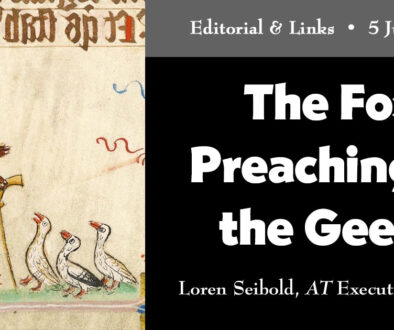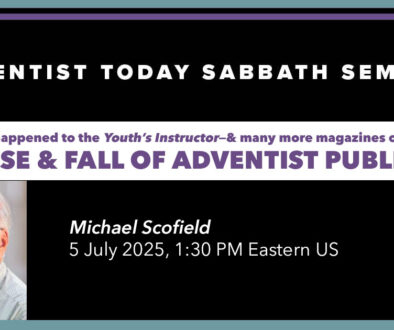The Power of Proximity
by S.M. Chen | 24 September 2018 |
“I once was lost, but now am found,
Was blind, but now I see.”
—‘Amazing Grace’ by John Newton (1725-1807)
In early morn I approach the multilevel parking structure adjacent to my workplace. I turn off the FM classical musical station, lower the driver side window and open my car’s center console. I extricate a circular small caliber chain from which dangles a plastic rectangular ID card.
I slow my vehicle to a stop at the entry, for a hinged horizontal gate bars ingress. In order to activate the arm, to have it rise 90 degrees to a vertical position, I must press the magnetic strip on the back of the ID card against an electronic sensor residing near the gate.
An audible beep indicates success. I suppose this signal is unnecessary, in that I can see the gate move, but it nonetheless reassuring to have auditory confirmation of a visual action. Two of the five senses working in tandem.
Sometimes the sensor is a bit finicky. I’ve had to move the ID card about a bit in order to activate the sensor. Card placement is not intuitive, and there is no slot into which to insert the card. There are no instructions.
On rare occasion, the card does not work at all. It is at such times that I realize that, like much else in the world, it is getting old and has perhaps somehow become demagnetized.
Fortunately, I can, with minor inconvenience, obtain a new card. Other things in life may not be so easily replaced.
I do not have long arms. Depending on my approach, I may not be able to reach the sensor without opening the car door and partially exiting the car.
It was on such an occasion that I made a discovery: it was not necessary to actually touch the card to the sensor, to have the two make physical contact, in order to activate the gate.
If the two came within a half inch of each other, the gate would open. What about an inch? I did not have a caliper, or tape measure, but estimated that an inch proximity would be sufficient most of the time.
It is sometimes wonderful to have invisible forces at work.
One of the magnificent frescos on the ceiling of the Sistine Chapel, painted by Michelangelo da Buonnaroti (1475-1564), is ‘The Creation of Adam.’ It may not have happened in quite this manner, but the depiction – divinity creating humanity – is wondrous, regardless. A careful examination of the painting reveals that the fingers of God and Adam, as portrayed by the artist, who lay on his back to laboriously paint this masterpiece (as well as many others in the Chapel), may not actually touch.
But the proximity is sufficient for the transmittal of life force, what my ancestors called ‘Qi.’
The physician Luke relates the instance of a woman with a blood issuance problem for 12 years, who had exhausted her savings in an attempt to find a cure. Her faith matched the frustration she must have experienced. The moment she touched the hem of the garment of Jesus, she was healed. What if she had not actually touched the border of the garment, but had, instead, gotten close?
Immediately after contact, the Master asked, “Who touched Me?” Some of His disciples asked what He could mean, for there was a multitude of people who thronged them. But He had felt something – or, perhaps, more accurately, the sudden lack of something. Did He possess a sixth sense?
Something He had had a moment before had left Him. He called it ‘virtue.’ Some call it ‘power.’ Regardless, it seems to have been a force for good.
But He was happy to have lost it. For there was more where that came from. Upon dénouement, He commended the woman who had, inadvertently, taken it and, in the process, been healed.
Intertwined with the above incident, comes substantiation His ‘virtue’ had not been lost. The young and only daughter of a ruler of the synagogue, Jairus, whose life in years was coincidentally the same as the number of years the afflicted woman had suffered, lay dying.
Perhaps tellingly, He did not hasten to her side. He let her die. Time is an arbitrary construct, and seems to be quite different for the Almighty than it is for us.
After her death, relatives mourned and wept.
Upon being told by Jesus she was not dead, but sleeping, they laughed Him to scorn. They knew better.
How quickly emotions can change.
Then Jesus resurrected her.
Forsooth, the virtue had not gone out of Him.
This discussion is but a tiny tip of the iceberg of the reality of a parallel universe.
There is so much we don’t understand.
Given the confines of our three dimensional (four, if one includes time) understanding, where is there room for the concept of ex nihilo – creating something out of nothing?
Of 100 billion galaxies, each containing 100 billion stars?
For animals to speak human language (the serpent in Eden; Balaam’s ass)?
For the multiplication of bread and fish to feed 5000 (or 4000)?
For the Almighty to know the (decreasing) number of hairs on our heads?
For foreknowledge?
For transmission of communication instantaneously across at least millions of miles of space?
Or?
One can go on.
And on.
One only need read Job 38 to get a small, lyrical inkling of the vast gulf between that other universe and our own.
Or, perhaps at least as astonishing, the transformation of a heart of stone into one of flesh.
Of the opening of eyes to see, and of ears to hear.
So let us maintain, if not contact, proximity.
Sometimes it is the best we can do.
For that gap, or what appears to be a gap, may not be a gap at all, or, if it is, it may be spanned by grace.
Invisible, amazing grace.
A place awaits where there will be no more puzzling issuance of blood. In fact, no illness of any kind.
And no more death.
For the former things are passed away.
The last chapter of Holy Writ speaks of life.
The river of water of life.
The tree of life.
Life as it was intended to be.
Dear Adventist Today readers: I’m inserting this note to tell you that we are right now conducting our autumn fundraiser. Adventist Today is largely a volunteer organization, but if we’re going to continue to provide you with stimulating news—often news you get nowhere else—and fascinating commentary by some of the best writers in the denomination, we do need some financial support. I hate begging you, but right now we need to: our treasurer, Paul Richardson, tells me that we’re at our lowest point for a long time. If you want to see us continue to do the journalism that you’ve been accustomed to from Adventist Today, would you follow this link and give us a gift now? Loren Seibold, Executive Editor, Adventist Today website and magazine.
 Sam Chen writes from California.
Sam Chen writes from California.




